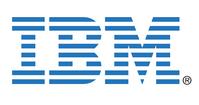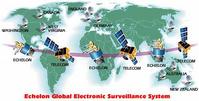| Saturday, March 12, 2005 |  |
|
|
|
Gunter mentions the neat Epic 2014 flash presentation of a fictional history of how things might have developed between now and 2014, in terms of media and news and the Internet. Yeah, it could happen like that. I think it might be more radical than that. Like, it might not be about which currently existing companies end up running the world by making an even better combination of a search engine and a news aggregator. It might be about something really new. Then again, it might be that. And, if so, better Google than Microsoft. Better the companies that best enable an infrastructure for sharing amongst us, rather than the company that only cares about locking us into their own cumbersome vision of how things should be.
[ Technology | 2005-03-12 17:46 | | PermaLink ] More >
|
|
| Thursday, February 10, 2005 |  |
|
|
|
 O'Reilly has an excellent interview with Stewart Butterfield who's the CEO of Ludicorp, the company making Flickr. This guy sure has the right attitude. Making cool stuff, facilitating open sharing, and having great success while you're at it. Particularly interesting how the cool stuff and open sharing thing makes sense as a business strategy. O'Reilly has an excellent interview with Stewart Butterfield who's the CEO of Ludicorp, the company making Flickr. This guy sure has the right attitude. Making cool stuff, facilitating open sharing, and having great success while you're at it. Particularly interesting how the cool stuff and open sharing thing makes sense as a business strategy. It's really valuable for any new product or service to reach the hyper-geek audience, who are particularly influential. And for them, the open API is a sign of good faith, a sign that your photos and your data are not going to be locked up in Flickr--even though we don't currently offer a feature to download your photos to your own computer (we will), you could develop one.
It makes a difference for us as a business that other businesses are interested in working with us because they can tell up front how much work it's going to be. Basically third-party apps fall into one of two categories, useful or cool, and some things are both. Useful would include uploaders for a bunch of different platforms, a screensaver that pulls in your contacts' most recent photos, and an application called 1001 for OS X that grabs the most recent photos from your contacts or specified tags, and it pulls from them like an RSS reader. And then there's a bunch of applications that are just cool, like one that takes photos tagged with different colors and arranges them into the shape of a rainbow.
It makes a difference for us as a business that other businesses are interested in working with us because they can tell up front how much work it's going to be. They can have their engineers look at the API and say, "This is what I want to do, how long do you think it's going to take?"
If you didn't know, Flickr is a photo sharing site. You can upload your pictures and make galleries of them. You can use it like a more traditional photo site, and just share them with your friends and family. But the new and cool thing is that things are arranged so that you're most likely inspired and motivated to share the pictures with a wider audience. And you can tag the pictures with keywords, and so can other people. And you can designate what kind of license you imply by sharing your photo. And there are various program interfaces that allow people to construct all sorts of cool stuff around it. On their own initiative, without having to ask anybody anything.
The picture there is constructed automatically through the Flickr API from a bunch of shared pictures tagged as "squared circles".
In case there's any doubt about it, Flickr is going to make billions of dollars before too long, and will blow away any oldfashioned photo gallery sites that are trying to lock you in to their paid services.
[ Technology | 2005-02-10 22:29 | | PermaLink ] More >
|
|
| Tuesday, January 11, 2005 |  |
|
|
|
 I can rant a lot about the evilness of corporations. But it is very nice that there are some corporations that actually can figure out to stick with the light side of the force, while still remaining profitable. I'm talking about IBM here. I'm sure there must be something bad one can find to say about them too, but they do seem to be doing a lot of things right. They're one of the biggest supporters of Open Source, having released a lot of stuff out in the open, and paying lots of people for developing more. Interestingly, they will probably insist that it has nothing to do with any kind of inherent philosophy of free sharing. It is simply that they listen to what people want and try to find a viable business in delivering it. And people want open source. But you can of course contrast that with the Microsoft type of corporation, that apppears to have no interest in delivering what people actually want, but which wants to persuade, trick and hook people into buying what they want to sell, and which has a definite agenda about it, which isn't ours. I can rant a lot about the evilness of corporations. But it is very nice that there are some corporations that actually can figure out to stick with the light side of the force, while still remaining profitable. I'm talking about IBM here. I'm sure there must be something bad one can find to say about them too, but they do seem to be doing a lot of things right. They're one of the biggest supporters of Open Source, having released a lot of stuff out in the open, and paying lots of people for developing more. Interestingly, they will probably insist that it has nothing to do with any kind of inherent philosophy of free sharing. It is simply that they listen to what people want and try to find a viable business in delivering it. And people want open source. But you can of course contrast that with the Microsoft type of corporation, that apppears to have no interest in delivering what people actually want, but which wants to persuade, trick and hook people into buying what they want to sell, and which has a definite agenda about it, which isn't ours.
Now NY Times (registration required) reports that 500 of the patents they hold will now be freely available to anybody who works on open source. Bravo. But, again, it isn't just to be nice. As the article describes, they've carefully examined where their own economic self-interests lie, and they've realized how open technology standards and collaboration stimulate economic growth and job creation. Many smart folks can be found that agree with that, but it is still much too unheard of for a large corporation to proactively act accordingly.
[ Technology | 2005-01-11 15:32 | | PermaLink ] More >
|
|
| Sunday, January 9, 2005 |  |
|
|
|
    BoingBoing had a couple of postings, here and here, about somebody having noticed that Google had indexed a lot of web cameras, and it is easy to list them if you know how the URLs tend to look for certain manufacturers' viewing pages. BoingBoing had a couple of postings, here and here, about somebody having noticed that Google had indexed a lot of web cameras, and it is easy to list them if you know how the URLs tend to look for certain manufacturers' viewing pages.
The sort of mischievous thing about that is that many of these folks might not have intended for their webcams to be that public and easy to find. Well, obviously they can't be all that secret either. Google will only find them if they're linked from some other public page somewhere. And we're talking about cameras that are viewable for anybody who accesses that IP number in a web browser.
Anyway, I like webcams, and I was anyway thinking about making some webcam pages, so I couldn't resist going a little further on this opportunity. So, look at this page I just made. I grabbed the URLs of the first 500 or so of those pages from Google (using the SOAP interface). I figured out how to grab the currently first image from one of those streams. And then I set up a thing that scans through them every couple of hours and take a snapshot from each. And then, since we'd like to know where they are, I ran the IPs through HostIP which tells us the country and sometimes the city. So, you click on any one of them and you see the live video, at least if your browser can handle Motion JPEG. IE seems to have a problem with that.
Hopefully I won't hear from anybody's lawyer too soon. It seems harmless enough. You can see some airport lobbies, some streets and freeways, some people working in offices, some museums, some malls, some factory assembly lines, a school cafeteria, somebody's aquarium, a hangar where somebody parks their corporate jet, the snow conditions on some ski slopes. Doesn't seem to be any private bedrooms or anything like that.
What I like about webcams is not particularly the snooping, but more the telepresence. You can a little bit be somewhere else, far away, and watch a slice of life going by.
[ Technology | 2005-01-09 13:06 | | PermaLink ] More >
|
|
| Friday, November 19, 2004 |  |
|
|
|
 EETimes: EETimes:It's shortly before dawn, and the handful of early-morning commuters on the fog-shrouded suburban highway don't see the deer meandering across the road. Luckily, though, their cars see the animal. In an instant, the closest vehicle quickly applies its brakes and turns its wheels, steering around an otherwise imminent collision. It then sends warning messages to oncoming traffic, as well as to the vehicles behind it, which dutifully apply their brakes and slow to a near-crawl as the deer passes.
None of the drivers, however, is disturbed by the near miss. A few are too engaged in their morning newspapers; a couple more are snoozing for a few more minutes before arriving at the office. All are blissfully unaware of the incident because they, the "drivers," aren't driving; they're being chauffeured by their self-navigating vehicles.
Sound impossible? Many automotive experts don't think so. The technological pieces needed for a self-navigating vehicle are already falling into place, they say. But it will take at least two to three decades before those pieces will be assembled into a car that drives itself.
Two to three decades? That's what they said too when I was a kid, you know, more than three decades ago. The biggest problem seems to be that we still don't know how to make good AI. And then there's a matter of having good enough sensors.
[ Technology | 2004-11-19 18:00 | | PermaLink ] More >
|
|
| Tuesday, November 16, 2004 |  |
|
|
|
 Slashdot: Slashdot:
"Dutch research institute TNO has unveiled what it believes is the largest digital photograph in the world. The image contains 2.5 gigapixels or 7.5 gigabyte worth of data. It is composed of 600 single images shot by a computer-controlled pan-tilt unit in 7 second intervals. Afterwards, all photos where stiched together ... using the capacity of 5 high-end pc's in about 24 hours time."
Now, what's really cool about that is the fact that you can look at the picture online, and you can zoom in. Unbelievably close. At first glance it is just a fairly boring picture of a city. You can see what's close by it gets unclear and foggy in the distance. But then you can zoom in, and clearly see what is there. If you go look at it, you'll find that you can go read the license plates on cars and the street signs, many blocks away. Way out in the distance in the middle is a tiny little blob, just a handful of pixels at first. If you zoom in, you'll see that it is a magnificant church, and you can see what time it is on the clock on the tower.
So, how would that be for a webcam? One of those a day in all major cities. Or imagine when it becomes practical to capture live video like that. It will happen.
[ Technology | 2004-11-16 22:32 | | PermaLink ] More >
|
|
| Monday, October 18, 2004 |  |
|
|
|
 Article at TechWorld, explaining the hardware behind the Echelon system. You know, the system that is listening to and analyzing all your phonecalls, and which used to be a well-kept secret. It isn't any longer, in part because the companies that made it like to brag about their accomplishment. Aside from the satellites, a teraFLOP of processing power and 32GB of RAM for its buffer. Which apparently does the trick. They might have several of those, of course. Anyway, the next time you call somebody overseas and say "nuclear device" in a middleeastern accent, you can be sure that a recording of your call is set aside for further examination. Or maybe "bomb" in a French accent. Article at TechWorld, explaining the hardware behind the Echelon system. You know, the system that is listening to and analyzing all your phonecalls, and which used to be a well-kept secret. It isn't any longer, in part because the companies that made it like to brag about their accomplishment. Aside from the satellites, a teraFLOP of processing power and 32GB of RAM for its buffer. Which apparently does the trick. They might have several of those, of course. Anyway, the next time you call somebody overseas and say "nuclear device" in a middleeastern accent, you can be sure that a recording of your call is set aside for further examination. Or maybe "bomb" in a French accent.
[ Technology | 2004-10-18 21:00 | | PermaLink ] More >
|
|
| Wednesday, August 25, 2004 |  |
|
|
|
 Felix Petersen just showed me his new baby plazes.com. Very cool. You get the idea by noticing the new widget in my left sidebar, which shows where I am. After one registers, one downloads a little launcher application which cleverly can keep track of approximately where one is, based on one's current IP number. One can then name that place, specifying its precise address if appropriate, and other people who come along later can annotate it. That's of course particularly cool for people who travel a lot, and if you end up somewhere where somebody else has been before. Like, think of a semi-public location like an open wi-fi network. You'll also be able to find known locations close to where you currently are. So, discovering a place to plug in your wi-fi laptop would certainly be an obvious use of this. But you can add all sorts of other things. Like maybe what good hotels or restaurants are close by. And it opens the door to many other possibilities based on location. Like finding people who're close by. It is still a new system with some minor quirks, but go give it a try if you're currently on some kind of Lan connection anywhere in the world. Felix Petersen just showed me his new baby plazes.com. Very cool. You get the idea by noticing the new widget in my left sidebar, which shows where I am. After one registers, one downloads a little launcher application which cleverly can keep track of approximately where one is, based on one's current IP number. One can then name that place, specifying its precise address if appropriate, and other people who come along later can annotate it. That's of course particularly cool for people who travel a lot, and if you end up somewhere where somebody else has been before. Like, think of a semi-public location like an open wi-fi network. You'll also be able to find known locations close to where you currently are. So, discovering a place to plug in your wi-fi laptop would certainly be an obvious use of this. But you can add all sorts of other things. Like maybe what good hotels or restaurants are close by. And it opens the door to many other possibilities based on location. Like finding people who're close by. It is still a new system with some minor quirks, but go give it a try if you're currently on some kind of Lan connection anywhere in the world.
[ Technology | 2004-08-25 14:19 | | PermaLink ] More >
|
|
| Wednesday, May 5, 2004 |  |
|
|
|
Doc Searls mentions e164, which seems to be a scheme for storing phone numbers in the DNS system, to facilitate that you can do VOIP free phone calls, without involving any centralized provider. And a posting from Jim Thompson: "Waiting for the other shoe to drop". From e164: "ENUM 164" (also know as enum and e164) is a method that stores telephone numbers within the Internet's DNS. E164.org allows Voice over IP systems, such as Asterisk and SER (SIP Express Router), to place and receive telephone calls over the Internet, without using your local telephone line.
This allows businesses and people to make and receive telephone calls over the Internet and Internet style networks. Unlike other systems, your calls can be switched directly to the person you are calling instead of passing all of your calls through a single service provider. This means that congestion from busy services is reduced, providing a more reliable voice connection.
This system only requires a hostname to route phone numbers to, you can move around by simply updating a dynamic DNS service!
E164.org provides both "real" telephone and "free" number mapping to any Voice over IP address of your choosing. Presently we support multiple entries and multiple types, including IAX2, SIP, H323, TEL, HTTP, FTP, MAILTO, LDAP, ICQ, IRC, YAHOO, AIM and MSN! So if you applications can implement a DNS lookup on phone numbers you can effectively send faxes by email, email by phone number, find your friends on ICQ by their phone number, the possibilities are endless!" Sounds very promising.
[ Technology | 2004-05-05 10:25 | 0 comments | PermaLink ]
|
|
| Friday, April 30, 2004 |  |
|
|
|
 The Center for Responsible Nanotechnology has an easily readable overview of the likely path of the development of nanotech, the timeline, the issues, the dangers. The Center for Responsible Nanotechnology has an easily readable overview of the likely path of the development of nanotech, the timeline, the issues, the dangers.Molecular nanotechnology (MNT) manufacturing means the ability to build devices, machines, and eventually whole products with every atom in its specified place. MNT is coming soon—almost certainly within 20 years, and perhaps in less than a decade. When it arrives, it will come quickly. Molecular manufacturing can be built into a self-contained, tabletop factory that makes cheap products efficiently at molecular scale. The time from the first assembler to a flood of powerful and complex products may be less than a year. The potential benefits of such a technology are immense. Unfortunately, the risks are also immense.
Even a primitive diamond-building nanofactory can create products vastly more powerful than today's versions. Electrical power can be converted to motion, and vice-versa, with one-tenth the power loss and about 108 (100,000,000) times more compactly. Computers can be a billion times smaller and use a million times less power. Materials can be about 100 times stronger than steel. This means that most human-scale products would consist almost entirely of empty space, reducing material requirements and cost. Most of the rest of the product would be structural, easy to design. Even the simplest products could be software-controlled at no extra hardware cost. Manufacturing of prototypes would be quite rapid—a few minutes to a few hours. Because manufacturing and prototyping are the same process, a successful prototype design could immediately be distributed for widespread use. A designer working with a few basic predesigned blocks could design, build, and test a simple product in less than a day. Products with complex interfaces to humans or to their surroundings—information appliances, automobiles, aerospace hardware, medical devices—would be limited by the time required to develop their software and test their functionality. However, in some fields the high time and money cost of manufacture slows other parts of the development cycle; this effect would disappear. An explosion of new, useful products could rapidly follow the widespread availability of a nanofactory. In Neal Stephenson's science fiction "The Diamond Age" (which is a fabulous book), a typical apartment had a Matter Compiler in the kitchen. It was plugged into a feed of basic atomic components. And then you could basically ask it to manufacture on the spot pretty much anything you'd know how to ask for. Which would be built atom by atom. It is called the Diamond Age, because diamond would become one of the easiest and all-around most useful materials to build stuff of. You just need carbon atoms, which are in plentyful supply, and diamond is a very strong material, and transparent. Your windows would quite naturally be made of solid diamond.
Anyway... in twenty years or less!!?! This is serious, folks. Yes, obviously, if somebody makes workable nano-assemblers and figures out how to power them, then one thing will take another, very quickly. Then they can build duplicates of themselves. And then hardware suddenly is just a matter of software. I.e. you need just some raw atoms and a blueprint. It is going to cost nothing. The world will never be the same. And, no, it won't just be a nice appliance to have in the kitchen. Everything will change pervasively.
So, there's a big hurry to solve the moral and organizational and security issues around this. If anybody can download the plans for a nuclear bomb or the ebola virus, and press a button to build them any time they want - then what? So the race is on, to either build some kind of sofar uninvented safeguard into such a system, or for humanity to figure out how to organize itself so as to survive such capabilities.
[ Technology | 2004-04-30 18:19 | | PermaLink ] More >
|
|
| Wednesday, April 28, 2004 |  |
|
|
|
 The Guardian has an article about how Google seems to cover up what kind of horsepower they're really sitting on. The Guardian has an article about how Google seems to cover up what kind of horsepower they're really sitting on.[T]ake the number of servers that Google operates. The only figure the company will admit to is '10,000+'. They also claim to have '4+ petabytes' of disk storage, and have let slip that each server is fitted with two 80 gigabyte hard drives. Now a petabyte is 10 to the power of 15 bytes, so if Google had only 10,000 servers, that would come to 400 Gb per server. So again the numbers don't add up. I could go on, but you will get the point. But what it all comes down to is this: Google has far more computing power at its disposal than it is letting on. In fact, there have been rumours in the business for months that the Google cluster actually has 100,000 servers - which if true means that the company's technical competence beggars belief.
Now the interesting question raised by all this is: why the reticence? Most companies lose no opportunity to brag about their technology. (Think of all those Oracle ads.) Is this an example of Google behaving ultra-responsibly - being careful not to hype its prospects prior to an IPO? Or is it a sign of a deeper commercial strategy? The latter is what Garfinkel suspects. 'After all,' 'he says, 'if Google publicised how many pages it has indexed and how many computers it has in its data centres around the world, search competitors such as Yahoo!, Teoma, and Mooter would know how much capital they had to raise in order to have a hope of displacing the king at the top of the hill.' If truth is the first casualty of war, openness is the first casualty of going public. It is an interesting conundrum, as Google indeed appears as a very open and accommodating company. But it seems their secret weapon is not just a clever indexing algorithm, but the fact that they've constructed the vastest distributed computer system in history, making them able to apparently easily and quickly do feats that previously were considered completely unrealistic. It is intriguing that it has considerable business value for them to greatly understate their own accomplishments. And it is intriguing that the Internet no longer is just a flexible routing protocol. The Google hypercomputer has become an unavoidable key to providing what we expect from the net.
[ Technology | 2004-04-28 11:58 | | PermaLink ] More >
|
|
|
|
 One of the features in the Li'l Abner cartoon from the 1940s was the strange and lovable Shmoo creatures: One of the features in the Li'l Abner cartoon from the 1940s was the strange and lovable Shmoo creatures:The Shmoo first appeared in the strip in August 1948. According to Shmoo legend, the lovable creature laid eggs, gave milk and died of sheer esctasy when looked at with hunger. The Shmoo loved to be eaten and tasted like any food desired. Anything that delighted people delighted a Shmoo. Fry a Shmoo and it came out chicken. Broil it and it came out steak. Shmoo eyes made terrific suspender buttons. The hide of the Shmoo if cut thin made fine leather and if cut thick made the best lumber. Shmoo whiskers made splendid toothpicks. The Shmoo satisfied all the world's wants. You could never run out of Shmoon (plural of Shmoo) because they multiplied at such an incredible rate. The Shmoo believed that the only way to happiness was to bring happiness to others. Li'l Abner discovered Shmoos when he ventured into the forbidden Valley of the Shmoon, against the frantic protestations of Ol' Man Mose. "Shmoos," he warned, "is the greatest menace to hoomanity th' world has evah known." "Thass becuz they is so bad, huh?" asked Li'l Abner. "No, stupid," answered Mose, hurling one of life's profoundest paradoxes at Li'l Abner. "It's because they're so good!"
Ironically, the lovable and selfless Shmoos ultimately brought misery to humankind because people with a limitless supply of self-sacrificing Shmoos stopped working and society broke down. Seen at first as a boon to humankind, they were ultimately hunted down and exterminated to preserve the status quo. Now, there are several advanced technologies on the horizon that might end up looking like the shmoos. Nanotech, genetic engineering, artificial intelligence, robots. What happens if there's an infinite supply of everything we need, and we succeed in constructing new life-forms, of silicon or DNA, to help serve our needs? Will these new intelligent structures be as cooperative and accommodating as the shmoos? And how would we adjust to having all of our material needs being fulfilled?
We'll have to develop some new ways of finding meaning in life, of course. We can no longer measure ourselves by how good we are at making a living. I think we can manage that. There are many other good things to do in life than just barely surviving or pursuing a bigger car. But some structures will have to be transformed greatly along the way. Not much need for an economic system if we can easily get everything we want.
No chance that we can close down any avenue of technological research, just because the outcome would be "too good" or "too powerful" for us to handle. If it is there to discover, somebody will discover it. We'll just have to evolve our own maturity at the same time, in order to be able to deal with the changed possibilities.
[ Technology | 2004-04-28 09:27 | | PermaLink ] More >
|
|
| Thursday, April 22, 2004 |  |
|
|
|
Via pollas.dk. TDC, the Danish telephone company, last month launched a cheap WiFi service with initially 400 hotspots. Coffee shops, gas stations, burger joints, and of course airports. Maybe not everywhere people would want it, but this does sound like one of the better efforts I've heard of. It costs 199Kr per month for unlimited access, which is around 27 euro. If you just think of it as your Internet connection, it of course has exceptionally little coverage. But compared with most other WiFi offers, which charge 8-10 euros per hour in a hotel or airport, it is exceptionally cheap, and has a great many outlets. If I lived in Denmark now, I wouldn't hesitate.
[ Technology | 2004-04-22 15:27 | | PermaLink ] More >
|
|
| Wednesday, April 21, 2004 |  |
|
|
|
 Finally there's some serious movement towards being able to use electronic devices on planes. This story in eWeek talks about Wireless Cabin, an EU project that would allow passengers to use a range of their own normal wireless devices, such as cell phone and WiFi or BlueTooth connected computer. As opposed to other plans in progress which are more restrictive. The trick to this approach seems to be to create very small cells within the plane, which would prompt cell phones to transmit with very low power. Which would avoid the possible interference problems. Tests will happen this summer on an AirBus plane, and if successful it might be put into production later this year. Expected prices: $10-30 for unlimited WiFi access during the flight. That sounds very attractive. Finally there's some serious movement towards being able to use electronic devices on planes. This story in eWeek talks about Wireless Cabin, an EU project that would allow passengers to use a range of their own normal wireless devices, such as cell phone and WiFi or BlueTooth connected computer. As opposed to other plans in progress which are more restrictive. The trick to this approach seems to be to create very small cells within the plane, which would prompt cell phones to transmit with very low power. Which would avoid the possible interference problems. Tests will happen this summer on an AirBus plane, and if successful it might be put into production later this year. Expected prices: $10-30 for unlimited WiFi access during the flight. That sounds very attractive.
[ Technology | 2004-04-21 18:31 | 0 comments | PermaLink ]
|
|
| Tuesday, April 13, 2004 |  |
|
|
|
 BBC, via Marc's Voice: A Matrix Online game is being released that includes built-in AOL Instant Messaging. That means that anyone with AIM, ICQ or iChat will be able to receive messages from inside the game in real time. BBC, via Marc's Voice: A Matrix Online game is being released that includes built-in AOL Instant Messaging. That means that anyone with AIM, ICQ or iChat will be able to receive messages from inside the game in real time.
Nothing technically very remarkable about that, but it is somehow intriguing. Links between virtual and real worlds. Of course one can take it further, to be able to make voice or video calls between a virtual world and the normal tools on my desktop. Would I then be looking at an avatar in the middle of chasing a monster?
Reminds me of AlphaWorld 8 years ago, where I was trying to figure out how to create meaningful links with the outside world. One could use outside graphics files to paste on signs and virtual screens. So I could make "fake" graphics files that ran a program on my server, which would IM me that somebody just came by and looked at my building. And I could of course have made the picture show some dynamically generated information in return.
[ Technology | 2004-04-13 19:19 | | PermaLink ] More >
|
|
| Sunday, April 11, 2004 |  |
|
|
|
 Nova Spivack: Nova Spivack:New software can figure out where you are positioned based on analyzing a photo in near real time. Simply send it a photo from your camera-phone and the software will match the image to a database of locations -- such as buildings in a city -- and give you back your coordinates. The software is potentially more accurate than GPS. That's cool and interesting of course. But would I pay for it? Or even bother to go through the steps of taking a photo and e-mailing it? Probably not. If it were all automatic and free it would be a different matter. If an always-on camera continously was scanning my surroundings and could tell where I am and what I'm looking at, that might be something. And then I'd probably have more use for a device that did it with faces. E.g. I go to a convention and it would tell me which people I already know, but have forgotten.
[ Technology | 2004-04-11 18:18 | | PermaLink ] More >
|
|
| Saturday, April 10, 2004 |  |
|
|
|
 When we first were staying in a hotel in Toulouse I tried to find out who might have WiFi, so I could connect up my computer. I found only one that mentioned "sans fil" (wireless) broadband access. But, hahah, when we got to the room, I realized that the wireless part was a keyboard that connected with the TV wirelessly. And the TV indeed provided Internet access, but at something like 20 euros per hour. When we first were staying in a hotel in Toulouse I tried to find out who might have WiFi, so I could connect up my computer. I found only one that mentioned "sans fil" (wireless) broadband access. But, hahah, when we got to the room, I realized that the wireless part was a keyboard that connected with the TV wirelessly. And the TV indeed provided Internet access, but at something like 20 euros per hour.
Now it seems to look a lot better. Here's a list of hotspots in Toulouse. Maybe only the ones that use the Intel hardware, I'd guess, but at least there are a bunch. All of which are the more expensive hotels. To the tune of 8 euros per hour.
When later I was waiting for by DSL connection, I once drove around looking for open WiFi access. And after a while managed to park in front of some school that had an open network, to check my e-mail.
WiFi Toulouse is a little grassroots group that is hoping to have more free access points. For a list they point to JWire, which, however, have none listed for Toulouse. Not that I need it at this point, but it would be a good thing.
[ Technology | 2004-04-10 10:21 | 0 comments | PermaLink ]
|
|
| Monday, April 5, 2004 |  |
|
|
|
 From Roland Piquepaille's Technology Trends. So, you didn't think a bicycle could have square wheels? Well, it all depends on the surface you're riding on. From Roland Piquepaille's Technology Trends. So, you didn't think a bicycle could have square wheels? Well, it all depends on the surface you're riding on.Stan Wagon, a mathematician at Macalester College in St. Paul, Minn., has a bicycle with square wheels. It's a weird contraption, but he can ride it perfectly smoothly. His secret is the shape of the road over which the wheels roll.
A square wheel can roll smoothly, keeping the axle moving in a straight line and at a constant velocity, if it travels over evenly spaced bumps of just the right shape. This special shape is called an inverted catenary.
A catenary is the curve describing a rope or chain hanging loosely between two supports. At first glance, it looks like a parabola. In fact, it corresponds to the graph of a function called the hyperbolic cosine. Turning the curve upside down gives you an inverted catenary -- just like each bump of Wagon's road. OK, so here's an idea: What about wheels that dynamically change shape quickly enough that they always fit whatever road surface you're going over, so that you can always have a smooth ride. And we might become less attached to smooth surfaces.
[ Technology | 2004-04-05 16:57 | | PermaLink ] More >
|
|
|
|
 Via Liz Lawley news of Infocom Bots that let you play the great Zork text adventure games over AIM or iChat. It remembers how far you've gotten for next time you come back. That's great fun of course. And it instantly makes me think about all the things you could possibly do with IM bots. Like, I could have a receptionist that answered for me: Via Liz Lawley news of Infocom Bots that let you play the great Zork text adventure games over AIM or iChat. It remembers how far you've gotten for next time you come back. That's great fun of course. And it instantly makes me think about all the things you could possibly do with IM bots. Like, I could have a receptionist that answered for me:"You're in Flemming's entrance hall. Flemming is traveling in Transylvania right now. There's a blog here, and a mailbox, an SMS terminal, and a phone booth. There's a picture on the wall. There's a WIKI path going off to the right. There are three other visitors standing around looking bewildered. What do you want to do?" And you would go: "Look at picture!" or "Open mailbox!" or "Talk to visitors!". Of course, since it probably knows who you are based on the IM handle, it could be more personalized. You know, "Welcome back Jill, you haven't been here for a week", or "Your shared collaborative blog there, with three NEW postings", or, "There are two notes and a picture for you from Flemming".
Really, I could also use an interface like that myself, if it were wired into my own mail and files and databases, etc. So, if I were on the road I'd just access my personal agent's IM, and it would tell me stuff like:"There are five phone messages for you, 52 new mail messages, 157 new postings in your aggregator. Your family went to the movies. It is 25 degrees. There are four computers there. On the wall you see a calendar and an address book." And I'd be able to tell it things like "Search for a file named 'Business Plan' on my computer!" or "Is there any mail from Joe?". And, really, if it can handle that, there wouldn't be such a big step to it doing it based on voice commands. So that I can have a conversation with my own agent. Nothing insurmountable in any of this. Tying various kinds of information together with some Apple scripting or something similar. For that matter, I could already use voice commands on my Mac if I bothered. What's the missing piece? That somebody just ties it all together for me into a killer application?
[ Technology | 2004-04-05 16:40 | 0 comments | PermaLink ]
|
|
|
|
 Peter Coffee has a nice article in eWeek, "Spreadsheets: 25 Years in a Cell", about how our use of certain software tools shape our behavior, and how different tools set us up for different assumptions and different fallacies and different ways of wasting our time. Peter Coffee has a nice article in eWeek, "Spreadsheets: 25 Years in a Cell", about how our use of certain software tools shape our behavior, and how different tools set us up for different assumptions and different fallacies and different ways of wasting our time.
Some companies have forbidden Powerpoint presentations in meetings. Because often people use a considerable amount of time at making their presentation look really impressive with graphical effects, but the time is often not very productive. It takes them 10 times as long to say the same thing, and it might just make it less clear what they're actually saying. A simple set of bulletpoints is often more clear.
And then there are spreadsheets:"There are two ways that spreadsheets, as we know them, distort our thinking and lead to bad decisions. The first distortion is the use of point values and simple arithmetic instead of probability distributions and statistical measures. So far as I know, there's no off-the-shelf spreadsheet product—certainly none in common use—that provides for input of numbers as uncertain quantities, even though almost all of our decisions rest on forecasts or on speculations.
There are add-on products that incorporate uncertainty into spreadsheets, and many of them are quite good. Products of this kind that I've favorably reviewed over the years include DecisionTools Pro from Palisade and Crystal Ball Professional and CB Predictor from Decisioneering. It's not too hard to appreciate the difference between products that incorporate uncertainty and those that don't: On the one hand, you've got, "We predict a $1 million profit in the first year"; on the other, "The expected Year 1 profit is $1 million, but there's a 30 percent chance of losses for the first two years." These different statements will lead to quite different discussions." We assume that because we can put some numbers in a spreadsheet that they somehow become more real and certain. And since the spreadsheet programs typically have no good way of representing the actual uncertainty, we skip over the subject. And it isn't enough that our tool allows us to represent several different alternative scenarios:"The subjects whose tools invited them to imagine alternative scenarios believed they were doing a better job—even though statistical measures of their results showed no improvement in the actual quality of the forecasts. Those subjects did, however, take longer to perform the task. Isn't that the worst nightmare of those who must justify IT's return on investment—spending extra money on a more time-consuming product that yields absolutely no measurable improvement?" It is a bit of an embarrassing secret that many of our computerized tools simply allow us to waste more time on making it look like we know what we're talking about, covering up the fact that we really don't.
We can get better tools, of course. Tools that better represent uncertainties and that show our assumptions more clearly. That's certainly an avenue to pursue. But we also need to develop our own built-in bullshit detectors, so that we can stay more conscious of the assumptions and fallacies inherent in what we're looking at, no matter how pretty and scientific it looks.
[ Technology | 2004-04-05 08:00 | | PermaLink ] More >
|
|
<< Newer stories Page: 1 2 3 4 5 6 Older stories >> |

